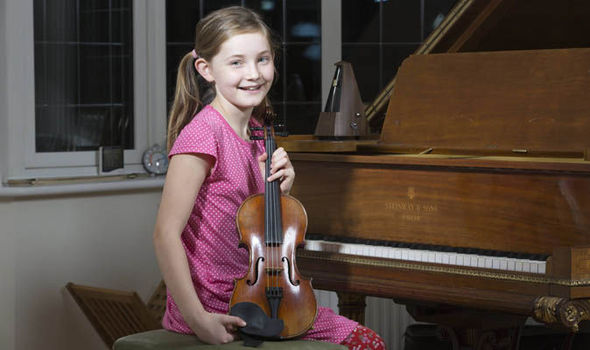Bro. Kevin O’Reilly OP
A new musical prodigy has appeared in our midst: Alma Deutscher, an 11-year-old English girl, has been causing quite a sensation in the world of classical music. Although she prefers not to be compared with Mozart, it’s difficult not to think in these terms. Hearing is believing when it comes to Alma’s genius.
Mozart is in fact one of Alma’s favourite composers and one can discern his influence in her own compositions. This influence is one of the features of her music that makes it so beautiful. In general terms her music is exquisitely beautiful because it is readily intelligible in terms of the Western classical tradition.
Her first opera, Cinderella, which recently premiered in Vienna, is captivating. The most striking aspect of the imaginative adaptation of the story is that the prince recognises Cinderella by a melody he heard her sing at the ball. And, indeed, the melodies in this opera are very memorable.
Composition
Alma reveals that the opera came to her in a dream. She dreamt that it was a beautiful piece of music by Mozart but when she woke up she realised that it was in fact her own composition. She remembered it, she says, because it was so beautiful. In fact, she adds, she wouldn’t have remembered it if it wasn’t particularly beautiful.
In interviews, Alma displays a breathtaking innocence that is anything but naivety. She knows that it’s not the ‘done thing’ to compose beautiful music – but she doesn’t understand why this is the case. As far as she is concerned she wants to compose such music and to make the world a more beautiful place.
I wonder whether a long-awaited shift is occurring in the world of classical music. Alma is not alone in wanting to write beautiful music. Ireland’s very own son, Patrick Cassidy, the greatest composer she has ever produced, has the same attitude.
I recall the first time I heard part of Cassidy’s cantata, The Children of Lir. I couldn’t believe that a contemporary composer had produced a work of such exquisite beauty. What’s more, the composer was Irish!
Many people are familiar with Vide cor meum which Cassidy wrote for the film, Hannibal. It appears on a CD entitled 40 Most Beautiful Arias alongside Mozart, Bizet, Puccini and Verdi. A setting of a text by Dante, one might describe it a hauntingly beautiful.
Patrick’s opera on the life of Dante will be premiered in Florence in 2018. He is beginning to reap the rewards of his perseverance in his vocation to beauty. One should not forget his setting of the Mass, which will also be premiered in the not too distant future.
A comeback? One wonders if beauty is making a comeback. Indeed, one hopes that with composers such as Patrick and Alma that it is, and that Western culture will once again espouse the canons of beauty in all the arts for this reason: beauty is intimately related to truth and goodness.
That point bears repeating: beauty is intimately related to truth and goodness. It is in fact the true experienced as good. The great Dominican philosopher-theologian, St Thomas Aquinas, expresses this idea in concrete terms: “Beautiful things are those which when seen give pleasure.”
This definition has been highly influential in the history of aesthetics, that is to say, the philosophy of art and beauty. To unpack its implications one would in fact have to write a whole book! To be able to say so much in so few words is the mark of genius.
This definition is arguably not the fruit of detached speculation for Aquinas was a highly-accomplished poet. His texts for the Feast of Corpus Christi are an aesthetic monument in the Catholic liturgical tradition.
If you follow the intellectual tradition inspired by Thomas Aquinas, the ineradicable allure of the beautiful, as witnessed to by the music of Cassidy and Deutscher, is heartening. Where beauty is valued, so too are truth and goodness. This enduring magnetism of the beautiful is heartening in a culture where the term of the moment is ‘post-truth’.
Let’s pray for perseverance
The art that any particular culture produces and values speaks volumes about its condition. Gabriel Marcel makes the challenging observation that “contemporary art, in certain of its most disconcerting expressions, constitutes an irrecusable testimony of what must be called an alienation”.
Watch and listen to Alma’s Cinderella on YouTube. Clearly the child has not yet become alienated.
Hopefully she never will. Let’s hope she displays the perseverance of Patrick Cassidy in her service of beauty and the truth and goodness that attend it.


 Alma Deutscher
Alma Deutscher 